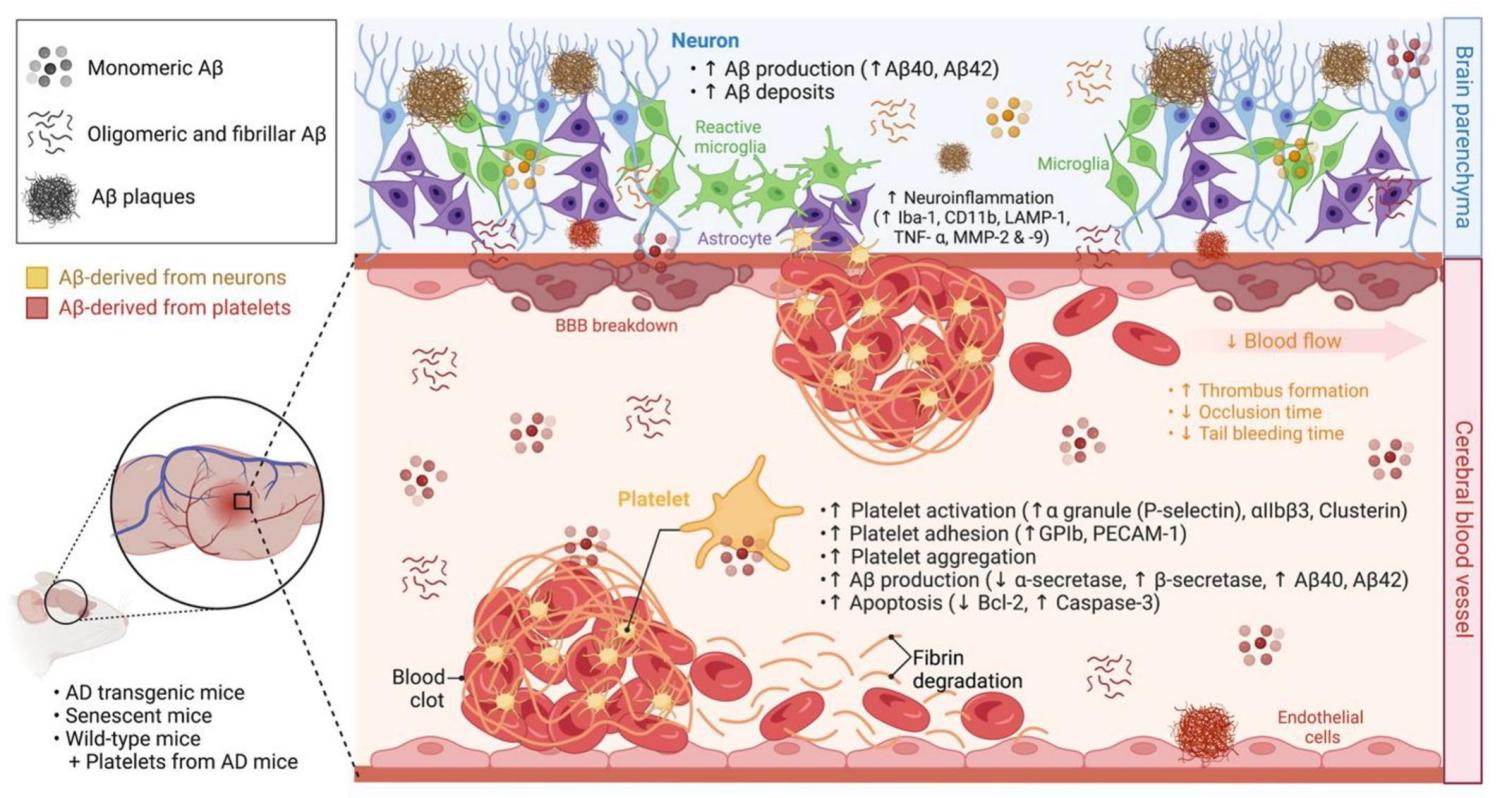
Cerebral amyloid angiopathy (CAA) is a prevalent comorbidity among patients with Alzheimer's disease (AD), present in up to 80% of cases with varying levels of severity. There is evidence to suggest that CAA might intensify cognitive deterioration in AD patients, thereby accelerating the development of AD pathology. As a source of amyloids, it has been postulated that platelets play a significant role in the pathogenesis of both AD and CAA. Although several studies have demonstrated that platelet activation plays an important role in the pathogenesis of AD and CAA, a clear understanding of the mechanisms involved in the three steps: platelet activation, platelet adhesion, and platelet aggregation in AD pathogenesis still remains elusive. Moreover, potential therapeutic targets in platelet-mediated AD pathogenesis have not been explicitly addressed. Therefore, the aim of this review is to collate and discuss the in vitro, in vivo, and clinical evidence related to platelet dysfunction, including associated activation, adhesion, and aggregation, with specific reference to amyloid-related AD pathogenesis. Potential therapeutic targets of platelet-mediated AD pathogenesis are also discussed. By enriching the understanding of the intricate relationship between platelet dysfunction and onset of AD, researchers may unveil new therapeutic targets or strategies to tackle this devastating neurodegeneration.
